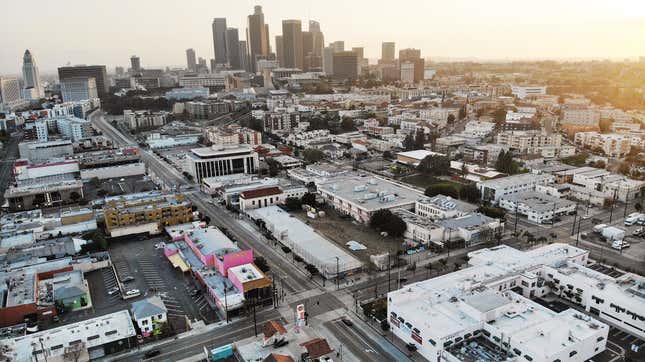
A trio of new studies published Thursday seem to push back the start of the covid-19 pandemic in the U.S. Two of the studies suggest that the coronavirus behind covid-19 was spreading locally in Washington State in late January to early February, while another suggests it was sickening people in Los Angeles last December. These estimates are all at least weeks before the first local cases of the viral illness were clearly documented in the U.S.
One study, published in the Journal of Medical Internet Research, looked at the past five years’ worth of electronic health records from a large health care system in the Los Angeles area affiliated with the University of California Los Angeles. These records were combed through for cases where people brought up a cough as one of their medical complaints—a common covid-19 symptom—as well as hospitalizations involving acute respiratory failure. The earlier years, starting in 2014, were used as a baseline to establish how many people sick with these complaints visited UCLA hospitals and outpatient clinics during the typical winter, which was then compared to the 2019-2020 winter.
The researchers found that the number of cases involving cough started to rise above the average level seen in recent years by the week of December 22, 2019—a trend that continued up through February 2020, when the researchers’ analysis stopped. Hospitalizations related to respiratory failure followed the same trend. Overall, they estimated that UCLA clinics and hospitals saw nearly 200 cough-related outpatient cases, 56 emergency room visits, and 18 related hospitalizations more than expected during those months.
While the above numbers may not seem like much, they only account for a single health care system in the area. Moreover, as the authors note, this uptick in complaints could have just been the tip of the iceberg.
“If only some of these excess visits are due to COVID-19, this could still represent community spread of SARS-CoV-2 during that time because a substantial proportion of individuals infected have no symptoms or mild symptoms and do not seek medical care, making cryptic spread of the disease within a community likely,” they wrote (“cryptic” spread just means unnoticed transmission).
As the authors acknowledge, there’s simply no way to tell how many, if any, of these “excess” cases were actually covid-19, assuming the trends they found are genuine. It’s possible that they instead reflect an especially heavy flu season or other factors, such as an unusual cluster of vaping-related illness (the 2019-2020 flu is expected to have been relatively severe, but final estimates aren’t in yet).
However, this isn’t the first piece of research suggesting that covid-19 was quickly spreading around the world earlier than officially recognized, even as far back as December 2019. In fact, two other studies examining the same question of when covid-19 reached the U.S. were published in the journal Science on Thursday.
Unlike the Los Angeles research, these studies both relied on genetic analysis and comparison of strains collected from patients in some of the first known places of the world where covid-19 was found outside of China, which is believed to be where the SARS-CoV-2 coronavirus originated from.
One study analyzed samples collected in late February and March from people in Washington State, the location of the first official U.S. covid-19 case (a person who returned from China on January 19) as well as some of the first locally caught cases. The other study also analyzed strains from people in Washington State, as well as from people in European countries where the outbreak is thought to have hit first, including Germany.
Both studies suggest that the virus was present in Washington sometime by late January or early February. The more global study, however, theorizes that the virus was introduced into the state via travel multiple times during that period and that the later widespread outbreaks seen in Washington in late February and March might have come from these later introductions. This same study theorized that a cluster of covid-19 cases found in Germany in late January did not lead to further widespread outbreaks elsewhere, such as in Italy.
The U.S. now has over 6 million documented cases of covid-19 and over 190,000 reported deaths—both underestimates of the true toll. The first local cases were found in late February, but it was weeks after that before most states were able to confirm their own local outbreaks, partly because of rampant failures in testing availability.
Though knowing that covid-19 was here earlier than we knew may not help us much now, understanding exactly when and how it spread across the world could allow us to someday trace its origins. It’s also possible that future outbreaks of emerging diseases could be prevented or stopped early by real-time analysis of the same kind of health record data that the ULCA study used.
“Lessons learned from this pandemic will hopefully lead to better preparation and the ability to quickly provide warnings and track the next pandemic,” the authors of the UCLA study wrote.
That said, our country’s leaders apparently knew how bad things could get by early February, for all the good that did.